Rhinoplasty, commonly known as a nose reshaping procedure, is one of the most popular cosmetic treatments Australians seek. A survey by Insure&Go revealed that approximately 15,000 Australians travel abroad each year for medical procedures, with rhinoplasty being one of the most common cosmetic treatments undertaken overseas. However, undergoing treatments overseas can involve significant risks, such as infections, adverse reactions, and unsatisfactory results due to differing standards of care.
Moreover, surgery may not always be necessary. Non-surgical rhinoplasty offers a safe, less invasive, and more affordable alternative for minor cosmetic adjustments. In this article, we will explore the differences between non-surgical rhinoplasty and surgical rhinoplasty to help you make an informed decision about which approach might suit you best.
What Is Rhinoplasty and How Does It Work?
Rhinoplasty, commonly referred to as nose reshaping, is a cosmetic or reconstructive procedure designed to alter the shape, size, or function of the nose. The aim can be aesthetic, such as improving facial harmony, or medical, such as addressing structural issues like a deviated septum. Techniques can vary from open surgery, where an incision is made across the tissue between the nostrils, to closed methods, where incisions are made inside the nostrils.
Differences Between Surgical and Non-Surgical Rhinoplasty
Surgical rhinoplasty is performed by a skilled surgeon under general anaesthetic and allows for significant changes, including:
Straightening a crooked nose
Reshaping the nasal tip
Removing bumps or humps
Addressing breathing issues
While it may offer significant, long-term aesthetic changes, surgery involves a lengthy recovery period and higher costs compared to non-surgical options.
On the other hand, non-surgical rhinoplasty, also known as liquid rhinoplasty, is a minimally invasive procedure that uses dermal fillers to reshape the nose. Hyaluronic acid-based fillers are injected into specific areas of the nose to smooth out bumps, improve symmetry, or lift a drooping tip. Unlike surgery, the results are temporary and typically last between 6–12 months.
At Flawless Aesthetics, non-surgical rhinoplasty is carried out with precision by qualified professionals. This approach is ideal for those seeking temporary aesthetic improvements without the recovery time associated with surgery.
Pros and Cons of Non-Surgical Rhinoplasty
Advantages of Non-Surgical Nose Jobs
Quick Procedure
A key advantage of non-surgical rhinoplasty is its speed and convenience. The procedure typically takes around 30 minutes, making it ideal for individuals with busy schedules. Unlike surgical rhinoplasty, which requires extensive preparation and recovery, non-surgical rhinoplasty can be performed in a single session without the need for general anaesthesia.
Immediate Results
The results of non-surgical rhinoplasty are visible immediately. After the dermal fillers are carefully injected into the targeted areas of the nose, clients can observe the changes right away. This instant transformation is particularly appealing to those looking for minor adjustments without the recovery time associated with surgery.
Minimal Downtime
Another advantage is the minimal downtime. Most clients can resume their regular activities the same day. There may be slight redness or swelling at the injection site, but these effects are generally minor and resolve quickly. This makes non-surgical rhinoplasty a convenient option for those looking for cosmetic enhancements without significant disruption to their daily routine.
Reversible
Non-surgical rhinoplasty also offers a degree of reversibility that surgical procedures do not. If a client is dissatisfied with the results or requires adjustments, the fillers can be dissolved using a specific enzyme, allowing for corrections or a return to the nose’s original shape.
Limitations and Risks of Liquid Rhinoplasty
While non-surgical rhinoplasty offers several advantages, it also has some limitations. Temporary Results: The results are not permanent, and maintenance treatments are required to maintain the desired effects.
Potential Risks: Although rare, serious complications may include vascular issues if not performed by a highly skilled practitioner.
One of the main considerations is the temporary nature of the results. Dermal fillers typically last between 6 to 12 months, and patients will need repeat treatments for continued results.
It’s also important to consider potential risks, although these are rare when the procedure is conducted by an experienced professional. If the filler is injected incorrectly, complications such as vascular issues may occur.
In very rare cases, this could result in tissue damage or more serious issues, such as affecting vision. However, choosing a well-trained practitioner significantly reduces these risks.
Is Non-Surgical Rhinoplasty Right for You?
Non-surgical rhinoplasty is an excellent choice for many, but it isn't suitable for everyone. Choosing the right procedure depends on your goals and health. Liquid rhinoplasty may be suitable for those with minor cosmetic concerns, such as small bumps or a drooping nasal tip. However, it is not recommended for:
Significant structural changes
Functional concerns (e.g., breathing issues)
Individuals wearing heavy glasses (pressure can dislodge fillers)
For those needing functional repairs or more dramatic reshaping, surgical rhinoplasty may be a more appropriate option.
If you're unsure which approach is best for you, schedule a consultation with our team at Flawless Aesthetics in Parramatta. We can assess your facial anatomy, listen to your goals, and help determine the most suitable option to meet your needs.
Recovery Times and Outcomes
After a surgical nose reshaping procedure, swelling and bruising are common and can take months to subside. Results are long-lasting, although they may take up to a year to fully settle, and occasional touch-ups may be required.
In contrast, recovery from a non-surgical nose reshaping procedure is almost immediate. Clients can typically return to work the same day or the next with minor redness or swelling. However, non-surgical options require ongoing treatments to maintain the appearance.
Cost Considerations
Non-surgical rhinoplasty costs usually start at $990, while traditional rhinoplasty is a more significant investment, with out-of-pocket costs around $4,500. This includes specialist, assistant surgeon, and anaesthetist fees.
How to Choose Between Surgical and Non-Surgical Rhinoplasty?
Both surgical and non-surgical rhinoplasty offer distinct advantages. While surgery provides permanent, more dramatic results, non-surgical rhinoplasty offers a more convenient and temporary solution for those seeking minor adjustments.
Consider the following factors when deciding between surgical and non-surgical rhinoplasty:
Whether you need minor adjustments or permanent structural changes
Your budget, including both upfront costs and long-term maintenance expenses
How much recovery time you can accommodate
Whether you're considering a quick liquid nose reshaping procedure or ready for the commitment of surgery, the most important factor is making an informed decision. Consult with our Parramatta non-surgical rhinoplasty specialists to discuss the option that best suits your goals and budget.









